Case Report - (2020) Volume 8, Issue 3
Ongoing trends in Endodontic practice
Sedani S*, Thakkar A and Nikhade P
*Correspondence: Sedani S, Department of Conservative Dentistry and Endodontics, Sharad Pawar Dental College, Sawangi (Meghe), India, Email:
Abstract
Background: The idea behind using the treatment protocols for endodontic practice have been varying ever since past few years with various developments and revolutions in endodontic field. It has been observed that most dental clinicians do not act in accordance with the principles that are formulated for successful root canal treatment.
Objectives: Results of the past studies are indicative of higher failure rates for teeth treated by other than endodontists. Although, the data available regarding the general practitioner’s approach to endodontic therapy worldwide is scarce. Hence the purpose of this study was to uncover the current endodontic practice among the general practitioners of Vidarbh region.
Materials and Method: A written questionnaire survey consisting of personal details of respondent as well as the techniques and materials used by them for endodontic treatment was conducted among 150 General Dental Practitioners of Vidharbha region.
Result: The study report described that some dentists are still using outdated techniques and materials which are deviated from standard endodontic quality guidelines.
Conclusion: This study will help clinicians to improve the quality of the current practice.
Keywords
Questionnaire, Dental practitioner, Root canal treatment, Endodontists
Introduction
Endodontics being the most promising field in routine dental practice, its treatment is considered the crucial element in the dental services provided to the patients [1]. The theoretical concepts and treatment protocols of endodontic practice have been changing since many years with various innovations and developments [2]. Studies have revealed that greater number of general dental practitioners do not comply with the formulated guidelines for quality of endodontic treatment [1,3]. Continuous advances in the new instruments, techniques and materials are taking place that include rubber dam, newer generation apex locators and flexible nickel-titanium files. These provide better treatment outcomes by reducing procedural errors. Nevertheless, it is debatable how far the modifications in the endodontic discipline have been incorporated in routine practice. Besides, adoption of these advances, various treatment protocols such as number of visits, use of irrigants and medicaments may differ variably among dental practitioners [2]. Various epidemiological studies are suggestive of higher failure rates for teeth treated by non-endodontists than for those treated by endodontists. However, the data available regarding the general practitioner’s approach to endodontic therapy worldwide is scarce [4]. Thus, the rationale behind carrying out this study was to investigate the outlook of general dentists concerning the techniques and the materials used in performing endodontic therapy.
Materials and Methods
After obtaining the approval from institutional ethical committee, the study was explained to the participants and an informed consent was obtained from them. The sample size for this study was estimated using the sample size for the similar study. The questionnaire used in this study was revalidated from School of Health Professional Education and Research, Sawangi (Meghe), Wardha. A written questionnaire survey which dealt with the materials and techniques used in endodontic treatment was conducted among 150 General Dental Practitioners of Sharad Pawar Dental College, Sarangi (Meghe), Wardha as well as private dental clinics of Vidarbha region of Central India.
The questionnaire consisted of three parts. The first part included the personal details of the participant regarding their age, gender, year and level of qualification. The names of respondents were not included to ensure anonymity of the responses. The second part of questionnaire included the practice profile of the participants. The third part of the questionnaire included the questions about the techniques and materials used by the practitioners while providing endodontic treatment to the patients. It included the investigation in detail about different protocols like methods of isolation, working length determination, instrumentation along with the usage of rotary nickel titanium etc. The findings obtained in the study were statistically analyzed using Chi square test.
Results
The questions in the proforma were divided into the basis of theoretical knowledge, attitude, and practice. These questions were designed to test the knowledge of general practitioners as well as to gather opinion about augmentation required for increasing awareness of practitioners towards endodontic treatment. 84 complete responses obtained out of the 150 distributed questionnaires suggested a reply rate of 56%.
Personal profile of participants
The distribution of respondents according to age was as follows. 7(8.3%) out of 84 participants were in the age range of 25 to 30 years. 20(23.8%) participants were in the age range of 31 to 35 years. 32(38.09%) participants were in the age range of 36 to 40 years and 25 participants were above the age of 41 years. Figure 1 shows the age differentiation amongst the dental practitioners. The values on Y-axis are shown in percentage. The age ranges along with the number of respondents are mentioned in brackets on X-axis.
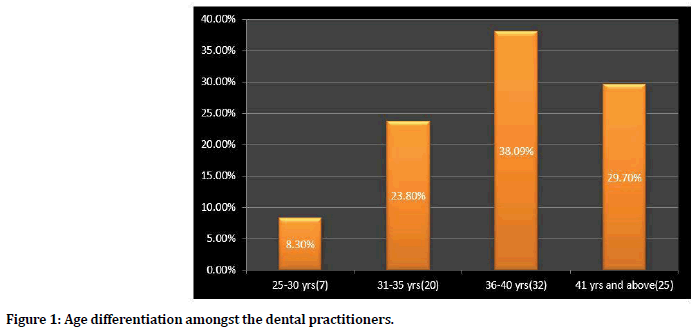
Figure 1. Age differentiation amongst the dental practitioners.
Out of 84 reply rates obtained, 53 (63%) participants were male and 31 (37%) were female. Figure 2 shows the gender differentiation amongst the dental practitioners. The values on Y-axis are shown in percentage. The number of male and female respondents are mentioned in brackets on X-axis. The distribution of respondents according to the years of professional experience is such that around 28(33.3%) of dentists had 0-5 years of experience, 21(25%) dentists had 5-10 years of experience, about 8 (9.5%) of them had more than 15 years of experience and only 4(4.8%) of the practitioners had 11-15 years of experience. Most dental practitioners, around 54 out of 84(64.3%) reported having bachelor’s degree and general dentistry training only while 30(35.7%) had advanced dental training in various fields (masters, advanced clinical certificate, or doctorate).
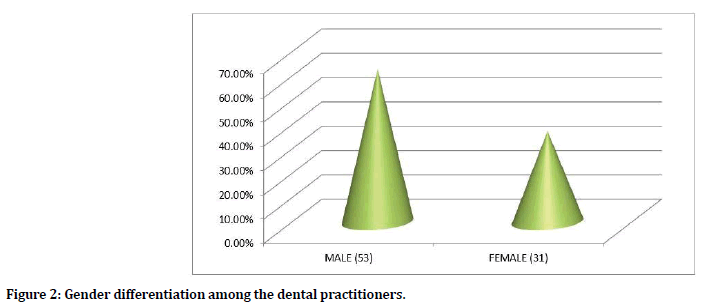
Figure 2. Gender differentiation among the dental practitioners.
Practice profile of participants
54 dentists (64.3%) out of total 84 participants, are private practitioners whereas 30 dentists (35.7%) work in government hospitals. About 71(84.5%) dentists are satisfied with their current endodontic technique whereas 12(14.3%) are not and rest i.e. 1(1.2%) did not respond. On an average, 32(38.1%) dentists perform the root canal therapy of about 11-15 teeth per week, 26(31%) dentists perform the RCT of 0-5 teeth, 16(19%) of them perform RCT of 11-15 teeth, 6(7.1%) of them perform of around 6-20 teeth and only 4(4.8%) of them perform of 21 teeth or more.
Questionnaire
Out of 84 respondents, 51 (60.71%) get the consent form signed from the patients before starting the treatment. Table 1 refers to the number of respondents getting the consent form signed before starting the treatment. Figure 3 below shows the antibiotic prescription by the practitioners while performing endodontic therapy. The values on Y-axis are shown in percentage. The number of respondents is mentioned in brackets on X-axis.
| Respondents getting the consent form signed before commencement of treatment | No. of respondents | Percentage |
|---|---|---|
| Yes | 51 | 60.71 |
| No | 33 | 39.28 |
Table 1: Number of respondents getting consent form signed before commencement of treatment.
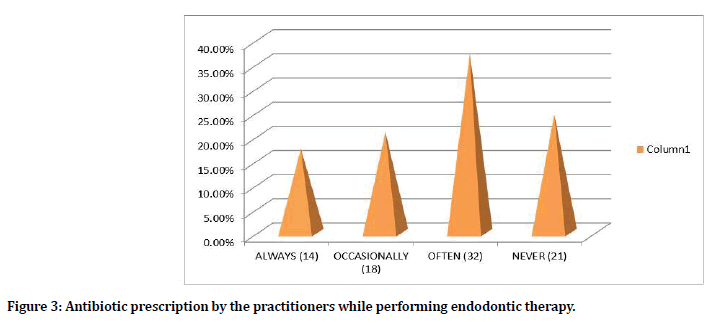
Figure 3. Antibiotic prescription by the practitioners while performing endodontic therapy.
Use of radiographs
53(63.1%) out of total respondents take conventional radiographs routinely whereas 31(36.9%) of them take real time images.
Selection of instruments and techniques
Approximately, 41(48.85%) out of the total 84 respondents use autoclaves to sterilize their endodontic files, whilst 37(44%) use glass beads sterilizers whereas 5(6%) and 1(1.25%) of them use cold sterilization method and discard files on single use itself respectively. Figure 4 shows the rubber dam utilization by practitioners. The values on Y-axis are shown in percentage. The number of respondents is mentioned in brackets on X-axis. For locating the canal orifices, endodontic explorer was used by 24(28.6%) dentists routinely, on the contrary to 17 dentists (20.2%) who never used it. It was used occasionally by 25(29.8%) dentists and 18(21.4%) often used it.
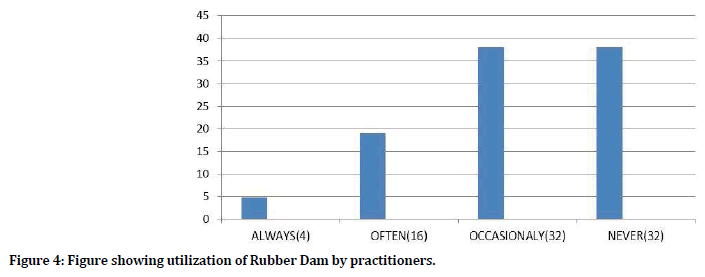
Figure 4. Figure showing utilization of Rubber Dam by practitioners.
Working length determination
Approximately, 28(33.3%) practitioners reported that they always used apex locator whereas 12(14.3%) never used it. About 22(26.2%) dentists often and occasionally used apex locator. Majority of respondents that is 42 out of 84(50%) dentists occasionally gave open dressing to the patients, whereas 26(31.05%) gave it often, about 9(10.7%) never gave the dressing and 7(8.3%) always gave the dressing. The table 2 refers to the technique of cleaning and shaping of root canal followed by the respondents.
| Cleaning and shaping methods | No. of respondents | Percentage (%) |
|---|---|---|
| Step back | 26 | 31 |
| Crown down | 34 | 40.5 |
| Conventional | 5 | 6 |
| Hybrid | 19 | 22.6 |
Table 2: Cleaning and shaping methods followed by the respondents.
Use of root canal irrigants
Table 3 refers to the root canal irrigants used by the dentists during the biomechanical preparation of root canal.
| Root canal irrigants | No. of respondents | Percentage (%) |
|---|---|---|
| Sodium hypochlorite | 24 | 28.6 |
| Liquid EDTA | 15 | 17.9 |
| Normal saline | 44 | 52.4 |
| H2O2 | 1 | 1.2 |
Table 3: Root canal irrigants used by the dentists during the biomechanical preparation of root canal.
The most popular concentration of sodium hypochlorite i.e. 5.25% is used by 29(34.5%) dentists. Other less commonly used concentrations were 3%, diluted, and 1.25% used by 26(31%), 15(17.9%) and 14(16.7%) dentists, respectively. Regarding the use of Gates-Glidden drills for enlarging the root canal orifices, about 38(45.2%) dentists used them occasionally, 23(27.4%) never used it, 21(25%) used it often and only 2(2.4%) used it always.
Figure 5 represents the choice of medicament used by general practitioners between the visits. The number of respondents using the medicaments are shown in the brackets. Vast majority of respondents of about 61 out of 84(72.6%) infra occlude the root canal treated tooth whereas 22(26.2%) respondents do not. For majority of practitioners 57(67.9%), the primary irrigants selected should have antibacterial capability, for those believing the primary property being biocompatibility included 21 out of 84(25%), substantivity for 5(6%) and the expense was important for around 1(1.2%) out of 84. Table 4 refers to the agreement of using rubber dam by practitioners. Figure 6 represents the root canal sealers used by practitioners. The values on Y-axis are shown in percentages. The number of practitioners using sealers are mentioned in brackets on X-axis.
| Whether rubber dam should be made mandatory? | No. of practitioners | Percentage (%) |
|---|---|---|
| Yes | 47 | 56 |
| No | 37 | 44 |
Table 4: Agreement of using rubber dam by practitioners.
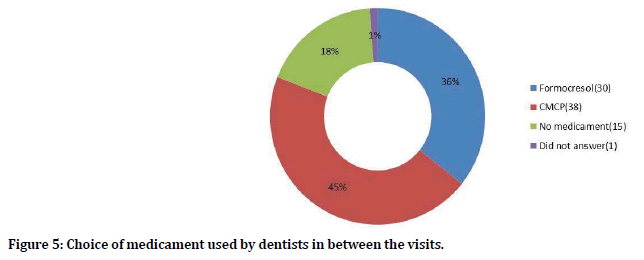
Figure 5. Choice of medicament used by dentists in between the visits.
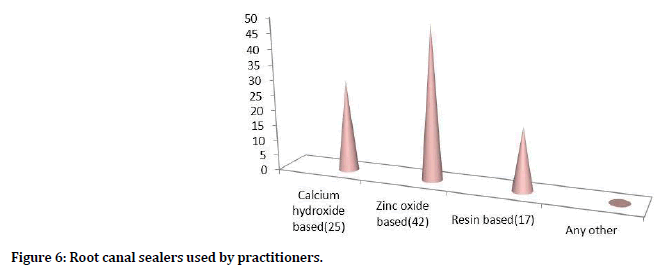
Figure 6. Root canal sealers used by practitioners.
Techniques of obturation
Figure 7 represents the method or technique of obturation performed by practitioners in their routine practice. The values on Y-axis are shown in percentages. The number of respondents is mentioned in brackets on X-axis. Figure 8 represents the choice of post endodontic restorative material used by the dentists. The values on Y axis are shown in percentage. The number of respondents is mentioned in the brackets on X-axis. Table 5 refers to the number and percentage of dentists advising crown at varying number of days after root canal treatment procedure. Figure 9 represents the design of the needle used by the dentists during endodontic irrigation. The values on Y-axis are shown in percentage. The number of respondents is mentioned in the brackets on X-axis. Figure 10 represents the dentists who aimed or not to remove the smear layer during endodontic treatment. Vast majority of dentists i.e. around 59(69.0%) routinely aimed to remove smear layer whilst 26 out of 84 respondents (31%) did not.
| No of days after which crown is advised | No. of respondents | Percentage (%) |
|---|---|---|
| 7 Days | 58 | 69 |
| 14 Days | 17 | 20.2 |
| 21 Days | 6 | 7.1 |
| None | 3 | 3.6 |
Table 5: Number and percentage of dentists advising crown at varying number of days after root canal treatment procedure.
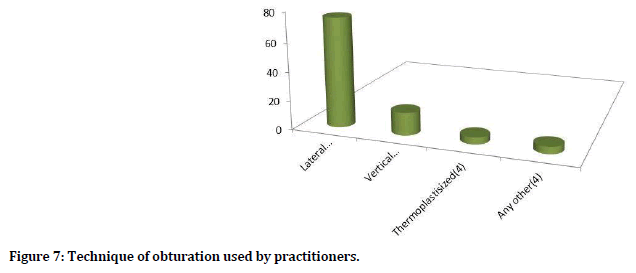
Figure 7. Technique of obturation used by practitioners.
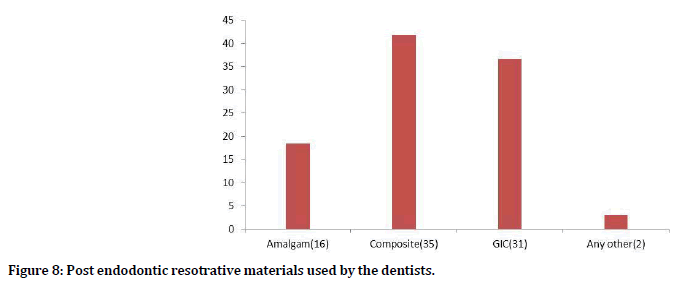
Figure 8. Post endodontic resotrative materials used by the dentists.

Figure 9. Design of the needle used by dentists during endodontic irrigation.
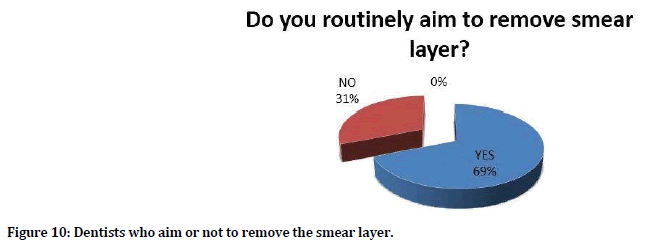
Figure 10. Dentists who aim or not to remove the smear layer.
Discussion
This study evaluated the status of endodontic practice among general dental practitioners in India. Endodontics is dynamic, tremendously evolving discipline with considerable advances in techniques and materials and has witnessed some major developments over last decade. Various advances like warm obturation techniques, electronic methods of determining root canal length, appropriate disinfection techniques, etc. has resulted in more predictable results for the general practitioners at various levels.
The response rate for this study was 56% which was lower than the studies conducted by Mehta et al. in which out of 230 questionnaires, 152 completed responses were received, which is 67% response rate [1]. This high response rate confirmed that the study was illustrative for general dental practitioners in the country. In this study, it was disappointingly low because of several facts like receivers may have found the questionnaire too long to answer. It may not have attracted attention for respondent to finalize the questionnaire. Secondly, sending a reminder was impossible because of anonymity of survey.
The number of first two groups (i.e. with 0-5 and 5-10 years of experience) in the present study consisted of more than half of the total respondents i.e. 49(58.3%) due to significant increase in number of graduates in the last decade [1]. This may have led to positive results especially to the questions about contemporary concepts and techniques. Also, as the field develops with time, the content of endodontic training in faculties may change. Thus, graduation year of dentists may have effect on the results.
53 out of 84 practitioners (63.1%) used conventional method of radiography in the present study. Similarly, studies conducted by Mehta et al. show that majority of the practitioners used conventional method of radiography [1]. The results obtained in the present study is low because of high startup cost. Secondly it may also be due to exposure creep. Thirdly, the ability to magnify images means there is potential risk for over interpretation as structures are viewed at much larger scale than conventional.
In the present study, only 4(4.8%) practitioners always used rubber dam isolation. This may be due to extra cost, additional time, lack of adequate skills or training or absence of patient’s acceptability. But there are 47(56%) practitioners who think that the use of rubber dam should be made mandatory while carrying out endodontic procedures. Whereas in the study conducted by Dr. N. Mehta 8.8% of the practitioners always used rubber dam isolation [1]. Also, in the study conducted by Al-Omari WM, only five dentists used rubber dam occasionally and not routinely [3]. Again, in the study conducted by Whitworth JM, et al. it was found that 60% of dentists never used rubber dam in endodontic treatment [5]. In the study conducted by Ahmed AF, et al. it was found that only one practitioner used rubber dam for isolation, whilst the remainder used cotton wool rolls [6]. The use of rubber dam is usually less in India. The purpose of rubber dam protection is primarily to reduce the risk of foreign body inhalation or ingestion by the patient and secondly to provide aseptic environment for endodontic procedures, also it improves the visibility of operating field. Although rubber dam isolation is taught as mandatory during undergraduate training, its importance is ignored.
Sodium hypochlorite in the concentration of (0.5- 5.25%) was used for irrigation by 69(82.2%) practitioners. Similar results were obtained in the study conducted by Zuhair et al. and Gade et al. in which sodium hypochlorite was most employed and is current irrigating solution of choice [4,7]. But in the study conducted by Ahmed et al. majority of respondents (80%) used hydrogen peroxide to irrigate canals during treatment [6].
Crown down technique was most used for cleaning and shaping (40.5%). On the contrary, in study conducted by N Mehta, step back technique was most popular root canal preparation technique among the dental practitioners [1]. Also, in the study conducted by ZuhairS.Natto,77% of the practitioners reported using step back technique and instrumenting RCTs with K files [4]. In the study conducted by Palmer NO, 58% used the crown down technique while 35% used the step back technique for canal preparation [8].
About 50% of the practitioners used Zinc oxidebased root canal sealer in the present study. Whereas in the study conducted by N. Mehta, half of the GDPs use formaldehyde containing materials [1]. Calcium hydroxide is a standard intracanal medicament which is used by only 29.8% of patients in this study. It has various properties like antimicrobial effect, also it causes mineralization due to release of hydroxyl ions which induce alkaline pH.
28(33.3%) practitioners in the present study used apex locator in all cases whereas in the study conducted by N Mehta, this protocol was followed by only one third of the practitioners [1]. In the study conducted by Selen et al. (30%) of the practitioners combined taking radiographs with an electric apex locator [2]. In the study conducted by Chan AWK, Low D, Cheung GSP, Ng RPY, roughly (62%) of respondents obtained working length radiographically, whereas 34% used radiography in conjunction with an electronic apex locator (EAL) and 5% used only the EAL [9]. However, the electronic apex locator has an advantage of being able to locate apical foramen. EAL is not a substitute for radiographs since latter provides valuable supplementary information about root canal morphology and periarticular anatomy. So logically the combination of EAL and radiographs provides efficient and accurate determination of working length.
Around 40(45.2%) respondents in the current study used CMCP as an intra appointment medicament between the visits. This finding is not consistent with the findings of N. Mehta, as half of the GDPs used formaldehyde containing products [1]. Even if these formaldehyde containing products have antimicrobial and fixative properties, they are toxic to periarticular tissues and may have mutagenic and carcinogenic potential. The use of calcium hydroxide should be increased more since it is effective against various root canal pathogens, controls pain, reduces inflammation and dry wet canals.
63 out of 84(75%) practitioners routinely used lateral condensation as a method of obturation in this study. This result was consistent with the study by Zuhair, et al. in which the practitioners used cold lateral condensation and epoxy resin sealers [4]. However, obturation by warm vertical condensation is more effective since it provides excellent seal of canal apically and laterally. Also, obturation of larger lateral and accessory canals can be possible.
Composite was used as post endodontic restorative materials by 35(41.8%) practitioners. This may be since composite bond micromechanically to the tooth structure and prevents any microleakage later. GIC also bonds to the tooth structure but the compressive strength of GIC is less and it is soluble in saliva. In contrast, approximately half of the respondents used cement as temporary filling coronal material in the study by Zuhair, et al. [4] .
58 out of 84 i.e. around 69% of the practitioners usually place crown after a week of endodontic treatment according to the current study. Similar results were obtained in the study conducted by Zuhair S. Natto, in which 44% of the practitioners placed the crown after one week [4].
Most of the practitioners in the present study practice sterilising the endodontic files by autoclaving (48.8%). Only 1.2% discarded the files after single use. This observation agreed with the study undertaken by Mehta et al. [1]. The goal of instrument sterilization in dentistry is to protect the patient from cross contamination via instruments. Thus, utmost care should be taken to clean and sterilize each instrument before it is used in patients. As an option the instruments should be considered as single use devices as this would decrease the risk of transmission of various infectious agents.
The most important property of primary irrigants selected by the practitioners in this study is the antibacterial capability (67.9%). Complete elimination of bacteria from root canal system and preventing its recontamination is an essential stage in endodontic therapy. Hence irrigation is essential in reducing number of bacteria within root canal and it also helps to control periapical disease.
Most of the practitioners (>40%) used zinc oxidebased root canal sealers. Similar results were obtained in the study conducted by Jenkins SM where two-thirds of practitioners used a zinc oxide-based material as their root canal sealer [10-13].
Only 2.4% of the practitioners in this study always used Gates-Glidden drill. This may be since; it requires maintaining tactile control or else it may lead to excessive dentin removal and furcal perforation. Also, clinician has to take into account the root morphology including the root fluting, width, length, curvature, etc. blockage is one of the risk in some canal anatomy after the insertion of GGD if the clinician does not assure all the debris is removed.
Conclusion
This report described the current approach of clinicians of Vidarbha region towards endodontic treatment. It shows that some dentists are still using outdated techniques and materials which are deviated from standard endodontic quality guidelines. Procedures like rubber dam usage for isolation, use of apex locator for working length determination are still not well incorporated.
This study mostly focuses on evaluating the trend, and investigates the attitude of the dentists towards endodontic treatment and shows that practitioners should keep on updating their knowledge regarding various techniques, materials and methods and adopt them in their routine practice to improve the quality of current practice.
Limitations
The present study has a response rate of 56% which is considered lower to be illustrative for the general practitioners across the country. The larger sample size may better provide the true picture. However, the results of the study can be used as a source for an extensive survey soon.
References
- Mehta N, Raisingani D, Gupta S, et al. Endodontic trends: Where we are and where we should be-A survey report peoples. J Scientific Res 2013; 6:30-37.
- Kucukkaya S. A questionnaire survey on current endodontic practice of dental practitioners in Turkey. Clin Dent Res 2015: 39:101-109.
- Al-Omari WM. Survey of attitudes, materials and methods applied in endodontic treatment by general dental practitioners in North Jordan. Bio Medical Central Oral Health 2004; 4:1.
- Natto ZS. A Survey of root canal treatment in Saudi Arabia. Oral Health Dent Manage 2014; 13:1-7.
- Whitworth JM, Seccombe GV, Shoker K, et al. Use of rubber dam and irrigant selection in UK generaldental practice. Int Endod J 2000; 33:435-441.
- Ahmed AF, Elseed AL, Ibrahim YE. Root canal treatment in general practice in Sudan. Int Endod J 2000; 33:316-319.
- Gade VJ, Sedani SK, Lokade JS, et al. Comparative evaluation of debris removal from root canal wall by using EndoVac and conventional needle irrigation: An in vitro study. Contemporary Clin Dent 2013; 4:432-436.
- Palmer NO, Ahmed M, Grieveson B. An investigation of current endodontic practice and training needs in primary care in the north west of England. Br Dent J 2009; 13:584-585.
- Chan AWK, Low D, Cheung GSP, et al. A questionnaire survey of endodontic practice profile among dentists in Hong Kong. Hong Kong Dent J 2006; 3:80-87.
- Jenkins SM, Hayes SJ, Dummer PM. A study of endodontic treatment carried out in dental practice within the UK. Int Endod J 2001; 34:16-22.
- Darda S, Manwar N, Chandak M, et al. An in vivo evaluation of two types of files used to accurately determine the diameter of the apical constriction of a root canal: An in vivo study. J Contemporary Dent Practice 2009; 10:1–8.
- Nikahde PP, Kibe AN, Thote AP, et al. Assessment of penetration of low surface tension vehicles in dentinal tubules using stereomicroscopy. World J Dent 2019; 10:135–139.
- Baliga S. A vision for pediatric and preventive dentistry oral health policy in India. J Indian Society Pedodont Preventive Dent 2018; 36:223–224.
Author Info
Sedani S*, Thakkar A and Nikhade P
Department of Conservative Dentistry and Endodontics, Sharad Pawar Dental College, Sawangi (Meghe), Wardha, IndiaCitation: Sedani S, Thakkar A, Nikhade P Ongoing trends in Endodontic practice, J Res Med Dent Sci, 2020, 8(3):110-117.
Received: 09-Mar-2020 Accepted: 07-May-2020 Published: 14-May-2020
